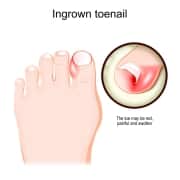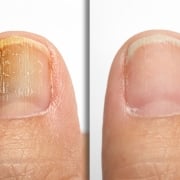Important Ingrown Toenail FAQs
Are you having issues with your feet? If so, you might need to make an appointment with a podiatrist in Austin, TX for a diagnosis. Don’t worry, though, it might be something as simple as an ingrown toenail. Let’s go over some ingrown toenail FAQs.
Important Ingrown Toenail FAQs
Here are some of the most common ingrown toenail questions.
Will an ingrown toenail heal itself?
No, an ingrown toenail won’t heal itself. But it’s possible if you catch it early on, you might be able to treat it at home. With that being said, it’s best to talk with a podiatrist to make sure no infection is present.
Should you cut out an ingrown toenail?
No, cutting out an ingrown toenail can lead to infection and make the situation worse.
Should you treat your ingrown toenail with hydrogen peroxide?
Yes, hydrogen peroxide is a natural disinfectant; therefore, you can treat your ingrown toenail with it if it hasn’t progressed into a moderate or severe situation.
Does Epsom salt draw out an ingrown toenail infection?
Yes, Epsom salt is great for healing an ingrown toenail infection. Try placing your foot in a mixture of warm water and Epsom salt for 15-20 minutes two times a day the first week, then once a day for the second week.
Will Neosporin help heal an ingrown toenail?
Each day, after soaking your foot in Epsom salt, you can apply some medicated cream to the affected area. Rub some Polysporin or Neosporin cream (not the ointment) on the area. However, talk with your podiatrist for advice about the proper ingrown toenail treatment first. They might recommend you keep the area dry after a point so your toe can heal.
Do you need a podiatrist in Austin, TX?
If you need a podiatrist in Austin, TX, please Contact Jeffery Lamour DPM, PA today. We have been providing patient-centered podiatry services to our patients for more than 20 years. Our state-of-the-art offices enable us to offer the most advanced treatments, as well as preventive and proactive solutions. We look forward to meeting you!








